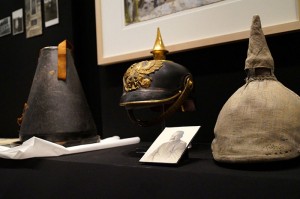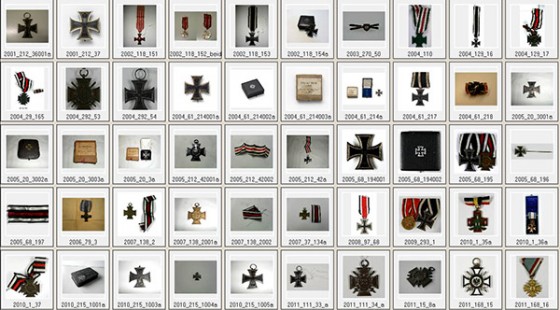Or: How 300 Artifacts from our Collection Were Turned into a Cabinet Exhibition about the First World War

Objects from our collections in the exhibition “The First World War in Jewish Memory”
© Jewish Museum Berlin, photo: Mariette Franz
Our exhibition “The First World War in Jewish Memory” opened last week. It is based primarily on collections donated to the Jewish Museum by German-Jewish families and each exhibit tells a very personal story.
In total, 176 exhibits were selected, researched and arranged as a visual narrative by eight curators, six restorers, two exhibition technicians, a translator and a graphic artist. So, even before I mention our numerous willing helpers in the wings, in particular the student assistants and the Museum caretaker, this sounds like a big team for a big exhibition. In fact, our joint endeavor culminated in a small cabinet exhibition relating to the First World War, which can be viewed until 16 November in the Rafael Roth Learning Center. → continue reading
The Jewish Museum is located in the well-known Berlin neighborhood of Kreuzberg, which is also home to a 66-meter high hill that gave the district its name in 1920: Kreuz meaning ‘cross’ and Berg ‘mount’ or ‘hill’. A monument designed by Friedrich Schinkel had been erected there about 100 years prior in memory of the war of liberation from Napoleon. On top it has always been bedecked with an Iron Cross. Prussian King Friedrich Wilhelm III first endowed the building of the monument 200 years ago, on 10 March 1813, the birthday of his late Queen Luise. A drawing of Schinkel’s design for the Iron Cross has been passed down to the Kupferstichkabinett’s collection (Museum of Prints and Drawings). In 1870 and 1914 respectively, Emperors Wilhelm I and II made subsequent endowments of the Iron Cross for particular service by German soldiers.
Numerous Iron Crosses can be found in the Jewish Museum’s collection, in many cases together with the respective certificates.

Iron Crosses in Kreuzberg – view of the object data bank of the Jewish Museum
© Jewish Museum Berlin
They nearly all date from the time of the First World War, in which around 100,000 Jewish soldiers participated on the German side. Among them were Julius Fliess (1876-1955) and Max Haller (1892-1960), whose medals are now in the Jewish Museum’s possession. → continue reading

